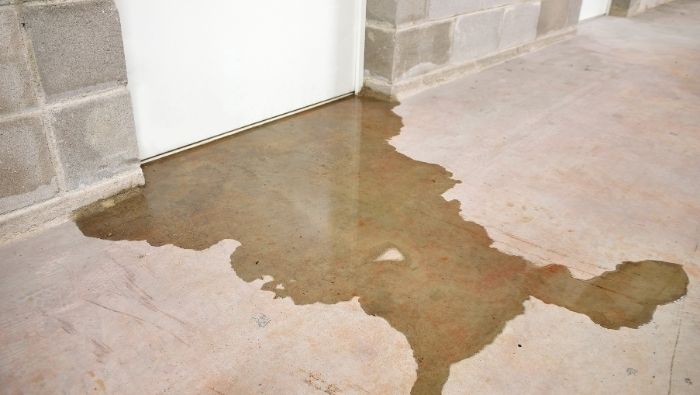Affordable Ways To Keep a Basement Dry

Uninvited water in your basement is never a good thing. It can mean an unexpected cost. These prevention steps can be your cheapest solution for keeping your basement dry and repair costs at bay.
It’s been raining heavily all day, so it seems like the perfect day to stay indoors and catch up on household tasks. You carry a large basket filled with dirty clothes to the basement to launder, only to discover that there are a few inches of water covering the basement floor.
You remember that a flooded basement had occurred once before. That time you had called your insurance agent to inquire about your homeowners coverage only to discover that “sudden and accidental” did not include your flooded basement, especially since you live in a low-lying area prone to flooding. There’s not much you can do right now, but since your basement is likely to be under water again, you wonder about affordable ways to keep your basement dry.
Prevention Is Key
If you have lived in your community for a while, you know if it gets heavy rains and if it is prone to flooding. If so, be proactive. Excess water seeks the lowest point when it needs a place to go, namely your basement.
Diverting water away from the house is a first step toward a dry basement. Spend an afternoon a couple times each year to take some soil out of your garden and spread it around the foundation of your house so the water can slope away from the house, not toward it.
Additionally, be sure all downspouts from the gutters send the gush of water far from the house. Gutter extenders cost about $7 to $12 each and are a perfect way to send excess gutter water several more feet away from the house. And for about $8 to $10 each you can buy a splash guard to position at the end of the downspout or gutter extender.
Additionally, if your basement is flood-prone, be cautious about what you put in the basement. Carpeting is probably not smart. If you have ever tried to move wet carpet, it is obvious why. Do not keep anything you are not willing to lose too close to the floor. You might even think about setting your washing machine and dryer on a platform off the floor. And, if possible, keep nothing plugged in that’s in your basement.
Sign Up for Savings
Subscribe to get money-saving content by email that can help you stretch your dollars further.
Twice each week, you'll receive articles and tips that can help you free up and keep more of your hard-earned money, even on the tightest of budgets.
We respect your privacy. Unsubscribe at any time.
A Sump Pump Is a Relatively Inexpensive Solution
A basement that’s prone to flooding should have at least one sump pump. If your basement already has a pit for one, make sure your sump pump is working properly. A pump should last approximately fifteen years or so. You can buy one at any hardware or home improvement center. (See 11 Ways To Save at Home Depot.)
There are essentially two types of sump pumps. Submersible pumps are most popular. Starting at about $65, they sit into a pit in the basement specifically for the use of this kind of pump. Pay more for more additional horsepower that will pump more water out of your basement faster. Pedestal pumps tend to cost about $100 or more. If your pit is not large enough, choose a pedestal pump.
A Basement Drainage System Is the Priciest Option
If you attend any of the home improvement fairs or events in your community, you are likely to encounter a booth selling water drainage systems for your basement. For $5,000+, and typically much more money, you can purchase a system that promises to keep your basement dry. Their information packet is thick, and seeing that it includes information about financing options gives you a big clue that it is expensive.
Typically, a sales person who is paid on commission comes to your home and tells you the dangers of water in your basement. Probably you have already figured out that water in the basement is never a good thing. It is tough on a house and your possessions and can create mold in the house. You certainly don’t need a PhD in environmental studies to know any of this!
Before signing any contract on this or similar products, find out if it is water proofing or water guard. Does it promise to keep your basement dry or does it just promise that it will be less wet? What type of warranty comes with the product? If you have this product installed and you still get water in your basement, what will the company do for you? And be sure to get names and contact information of people you can talk with who have had this product installed.
Uninvited water in your house is never a good thing. When it comes to keeping your basement or crawlspace dry, prevention is your best revenge.
Reviewed March 2024
About the Author
Debra is an occupational therapist, accountant, teacher and freelance writer. Learn more about her at DebraKarplus.blogspot.com.
Popular Articles
On After50Finances.com
- 9 Things You Need to Do Before You Retire
- You Didn’t Save Enough for Retirement and You’re 55+
- When Empty Nesters Reorganize and Declutter Their Home
- Reinventing Your Career in Your 50s or 60s
- What Mature Homeowners Should Know about Reverse Mortgages
- 2 Reasons to Collect Social Security Benefits As Soon As Possible

